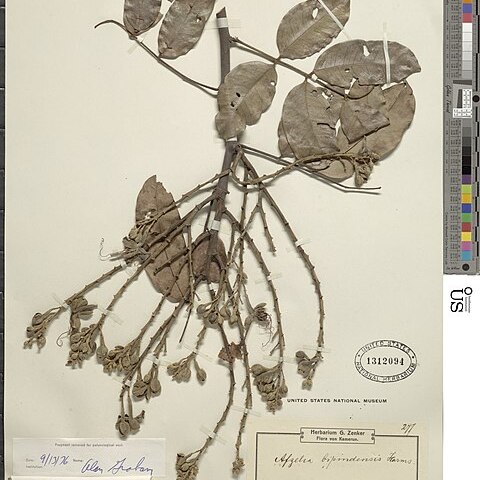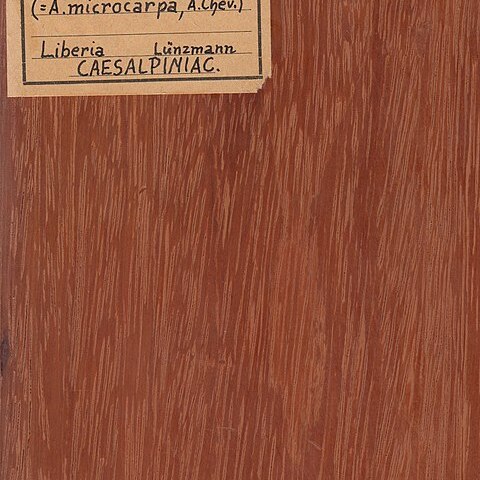Tall tree, 18–40 m. high; bark usually reddish-brown and scaly (but said on Sangster 538 to be “grey, fairly smooth”); young branchlets glabrous.. Leaves: rhachis with petiole 9–32 cm. long; leaflets (4–)5–7(–8, fide F.C.B.) pairs, petiolulate, oblong to oblong-elliptic, 5–13(–20, fide F.C.B.) cm. long, 2.6–5.8(–7, fide F.C.B.) cm. wide, ± apiculate or shortly acuminate at apex.. Inflorescence paniculate.. Flowers sweetly scented, with hypanthium 1.5–4.5 cm. long.. Sepals densely tomentellous outside, outer 2 elliptic, 1–1.7 cm. long, 0.8–1.5 cm. wide, inner 2 obovate-elliptic, 1.4–2 cm. long, 0.9–1.6 cm. wide.. Petal upwardly turned, 3.5–6 cm. long, with a long red-purple claw, and a crumpled ± bilobed lamina 3–5 cm. wide which is white at first and then turns pink.. Stamens 7 fertile, with pubescent filaments, red like the style; staminodes 2, elongate, 0.5–2 cm. long.. Style very sparingly pubescent.. Pods curved-reniform, (8–)11–19.5 cm. long and 5.5–8 cm. wide (fide F.C.B.).. Seeds black, ovoid-ellipsoid, 2.5–3.3(–4.5, fide F.C.B.) cm. long, 1–1.7(–2, fide F.C.B.) cm. wide, with a deeply bilobed orange aril, one at least of whose lobes reaches to about the middle or near the top of the seed.
More
A tree. It grows 25-40 m tall. The trunk is straight and can be 20 m tall and 140 cm across. It has short buttresses. The leaves are alternate and compound. There are 5-7 pairs of leaflets. The fruit is a kidney shaped flattened pod. 11-20 cm long by 6-8 cm wide. It opens with 2 woody valves and contains up to 15 seeds.
Petal with red-purple claw and white crumpled lamina turning pink
Seeds black and shining with orange aril.
Tall forest tree, to 130 ft. high
Alinyan, Arinyan, Doussie, Njoc, Odo,



